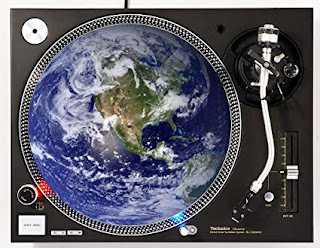After an ambitious overview of the 2000s on this here website, I present a scaled-down look at my favorite albums released during the last 3,650 (or so) days, covering 2010-2019. Did I miss nearly every exciting musical trend of the last decade? It sure seems so! Regardless, these are the albums that brought me the most joy; hopefully there's a disc or two here that can do the same for you. Happy listening!
THE TENS – NO DEPRESSION (32)
The Guitar Song, Jamey Johnson (Mercury) (2010)
Halcyon Times, Jason and the Scorchers (Courageous Chicken) (2010)
Harlem River Blues, Justin Townes Earle (Bloodshot) (2010)
The Harrow and the Harvest, Gillian Welch (Acony) (2011)
The Old Magic, Nick Lowe (Yep Roc) (2011)
The Cactus Blossoms, The Cactus Blossoms (2011)
Indestructible Machine, Lydia Loveless (Bloodshot) (2011)
KMAG YOYO (And Other American Stories), Hayes Carll (Lost Highway) (2011)
Temple Beautiful, Chuck Prophet (Yep Roc) (2012)
The Worse Things Get, The Harder I Fight, The Harder I Fight, The More I Love You, Neko Case (ANTI-) (2013)
The No-Hit Wonder, Cory Branan (Bloodshot) (2014)
Metamodern Sounds in Country Music, Sturgill Simpson (High Top Mountain) (2014)
Most Messed Up, Old 97s (ATO) (2014)
Roots Rock ‘n’ Roll, 6-String Drag (Royal Potato Family) (2015)
Midwest Farmer’s Daughter, Margo Price (Third Man) (2016)
A Sailor’s Guide to Earth, Sturgill Simpson (Atlantic) (2016)
The Lucky Ones Forget, Craig Brown Band (Third Man) (2017)
Way Out West, Marty Stuart & his Fabulous Superlatives (Superlatones) (2017)
Poor David’s Almanack, David Rawlings (Acony) (2017)
London Southern, Jim Lauderdale (Sky Crunch) (2017)
Trinity Lane, Lilly Hiatt (New West) (2017)
All American Made, Margo Price (Third Man) (2017)
Sidelong, Sarah Shook & the Disarmers (Bloodshot) (2017)
So You Wannabe An Outlaw, Steve Earle (Warner Brothers) (2017)
The Nashville Sound, Jason Isbell & the 400 Unit (Southeastern) (2017)
Don’t Talk About It, Ruby Boots (Bloodshot) (2018)
Golden Hour, Kacey Musgraves (MCA Nashville) (2018)
Providence Canyon, Brent Cobb (Elektra) (2018)
Tree of Forgiveness, John Prine (Oh Boy) (2018)
Mr. Jukebox, Joshua Hedley (Third Man) (2018)
Wild! Wild! Wild!, Robbie Fulks and Linda Gail Lewis (Bloodshot) (2018)
The Highwomen, The Highwomen (Elektra/Low Country Sound) (2019)
THE TENS - INDIE ROCK, ALBUM ROCK, GARAGE & POWER POP (53)
J. Roddy Walston & the Business, J. Roddy Walston & the Business (Vagrant) (2010)
Together, New Pornographers (Matador) (2010)
Majesty Shredding, Superchunk (Merge) (2010)
Crazy For You, Best Coast (Mexican Summer) (2010)
The Monitor, Titus Andronicus (XL) (2010)
WWII, White Wires (Dirtnap) (2010)
Hotel Shampoo, Gruff Rhys (Turnstile/Wichita) (2011)
The Whole Love, Wilco (dBpm) (2011)
El Camino, Black Keys (Nonesuch) (2011)
Bad As Me, Tom Waits (Anti-) (2011)
Wild Flag, Wild Flag (Merge) (2011)
Dye It Blonde, Smith Westerns (Fat Possum) (2011)
Dress Up Like Your Idols, BOAT (Magic Marker) (2011)
The King is Dead, The Decemberists (Capitol) (2011)
Yuck, Yuck (Fat Possum) (2011)
Lonerism, Tame Impala (Modular Fontana) (2012)
Celebration Rock, Japandroids (Polyvinyl) (2012)
Silver Age, Bob Mould (Merge) (2012)
Blunderbuss, Jack White (Third Man) (2012)
Open Your Heart, The Men (Sacred Bones) (2012)
Lex Hives, The Hives (Columbia) (2012)
Researching the Blues, Redd Kross (Merge) (2012)
Wakin On A Pretty Daze, Kurt Vile (Matador) (2013)
The Argument, Grant Hart (Domino) (2013)
Water on Mars, Purling Hiss (Drag City) (2013)
I Hate Music, Superchunk (Merge) (2013)
...Like Clockwork, Queens of the Stone Age (Matador) (2013)
NVM, Tacocat (Hardly Art) (2014)
Lost In The Dream, War on Drugs (Secretly Canadian) (2014)
Shattered, Reigning Sound (Merge) (2014)
Wig Out at Jagbags, Stephen Malkmus (Matador) (2014)
Third Time To Harm, OBN IIIs (Tic Tac Totally) (2014)
Lazaretto, Jack White (Third Man) (2014)
Way Out Weather, Steve Gunn (Paradise of Bachelors) (2014)
Manipulator, Ty Segall (Drag City) (2014)
Rips, Ex Hex (Merge) (2014)
Parade On, Doug Gillard (Nine Mile) (2014)
No Cities to Love, Sleater-Kinney (Sub Pop) (2015)
Sometimes I Sit and Think, and Sometimes I Just Sit, Courtney Barnett (Milk!/Mom + Pop) (2015)
★, David Bowie (Columbia) (2016)
Light Upon the Lake, Whitney (Secretly Canadian) (2016)
Eyes on the Lines, Steve Gunn (Matador) (2016)
Human Performance, Parquet Courts (Rough Trade) (2016)
Up to Anything, Goon Sax (Chapter Music) (2016)
Teens of Denial, Car Seat Headrest (Matador) (2016)
The World’s Best American Band, White Reaper (Polyvinyl) (2017)
City Music, Kevin Morby (Dead Oceans) (2017)
Peaced and Slightly Pulverized, David Nance Group (Trouble In Mind) (2017)
Anything Could Happen, Bash & Pop (Fat Possum) (2017)
POST-, Jeff Rosenstock (Polyvinyl Record Company) (2018)
12, Sloan (Yep Roc) (2018)
Sunshine Rock, Bob Mould (Merge) (2019)
Dusty Notes, Meat Puppets (Megaforce) (2019)
Purple Mountains, Purple Mountains (Drag City) (2019)











